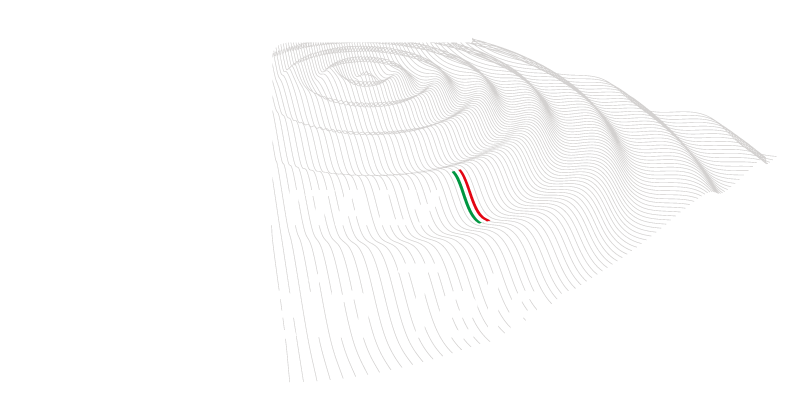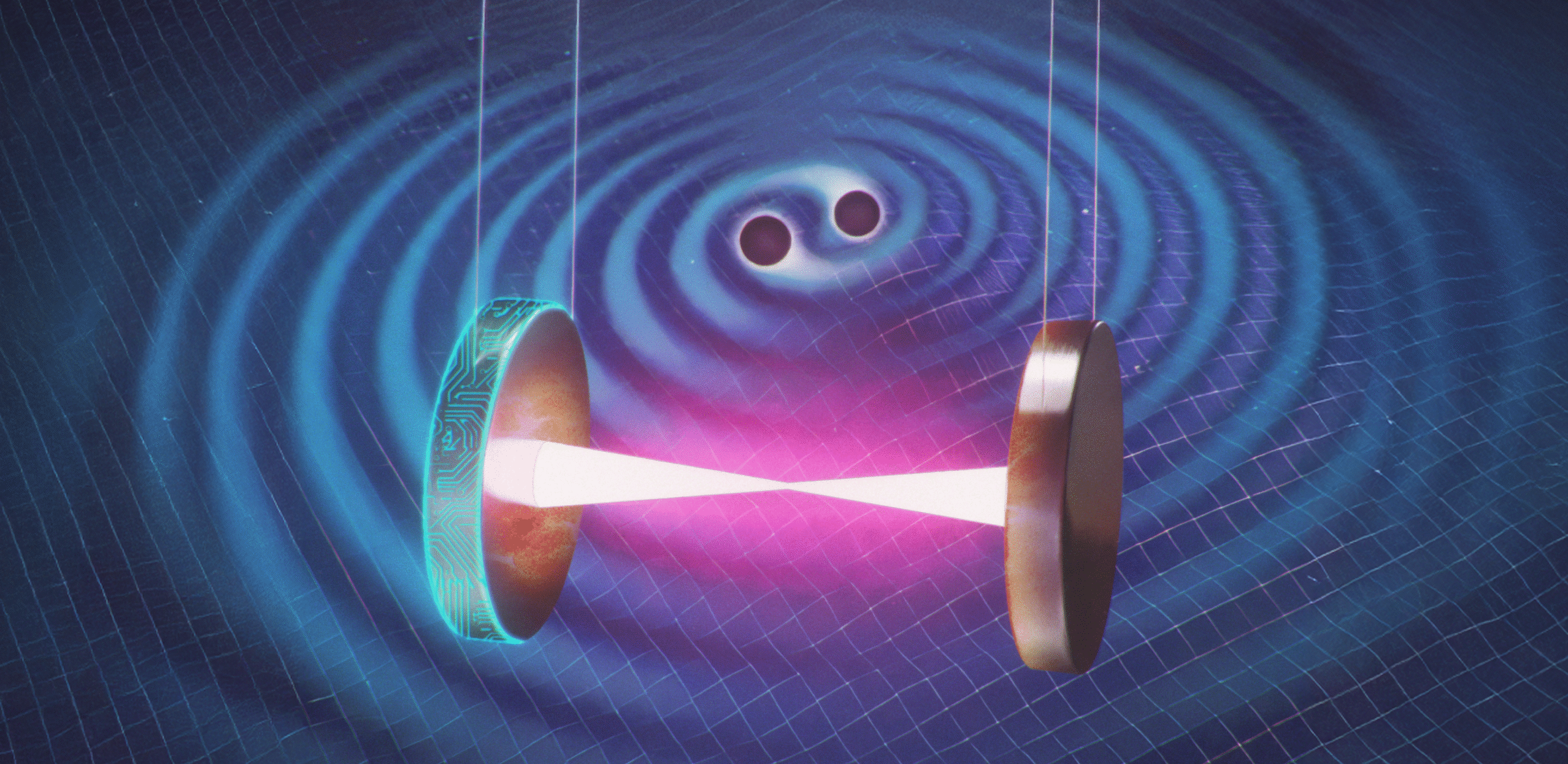Source: Gran Sasso Science Institute, September 4, 2025
An international team of researchers from the GSSI – Gran Sasso Science Institute (L’Aquila), Caltech – California Institute of Technology (Pasadena), and Google DeepMind (London) has used artificial intelligence to enhance one of the most sensitive scientific observation tools ever built: laser interferometers for gravitational waves detection. An article published today in the journal Science, co-authored by Jan Harms and Tomislav Andric, respectively full professor and post-doctoral researcher at GSSI, both associate researchers at INFN – National Institute for Nuclear Physics, presents Deep Loop Shaping, a new artificial intelligence method essential for the observation of gravitational waves with more sensitive, next-generation instruments such as the Einstein Telescope. The study comes just a few days before the 10th anniversary of the first observation of gravitational waves on Earth (September 14, 2015), vibrations of space-time theorized by Albert Einstein a century earlier.
According to the study, Deep Loop Shaping reduces noise and improves control in a gravitational observatory system by 30 to 100 times. When applied to current detectors – LIGO in the United States, Virgo in Italy, and KAGRA in Japan – it could help astronomers detect and collect data on hundreds more gravitational wave events per year, with a much higher level of precision. Since they were first observed, gravitational waves have revolutionized astronomy, allowing us to observe hundreds of collisions between black holes and neutron stars, understand the death of massive stars and the birth of new black holes, reveal the physics of the most extreme events in the Universe (including the creation of heavy elements such as gold), and lay the foundations for studying the properties of matter under extreme conditions and understanding the destiny of the Universe.
Laser interferometers, such as LIGO, Virgo, and KAGRA, use laser light interference to detect and measure the properties of gravitational waves. When gravitational waves pass through the two arms of the interferometer (3 kilometers in the case of Virgo), they deform space, causing a variation in the distance between the mirrors at the two ends of the detector that is so small that it is a fraction of the diameter of a proton. For such precise measurements, the detector mirrors must be kept absolutely still and isolated from any environmental disturbances. This requires mechanical isolation of the mirrors and a control system to actively suppress vibrations. Insufficient control causes the mirrors to oscillate, making any measurement impossible. But excessive control amplifies noise in the system instead of suppressing it, drowning out the signal in certain frequency ranges. This “control noise” is a fundamental obstacle to improving Virgo and LIGO’s ability to peer into the Universe.
Researchers at GSSI, Caltech, and Google DeepMind designed Deep Loop Shaping to go beyond traditional approaches: it harnesses a machine learning method that outperforms every other type of control. «Deep Loop Shaping uses simulations of the detector and its environment, reproducing the problem numerous times so that the machine learning algorithm can ‘learn’ the optimal control for the detector», explains Jan Harms. «Implementing a machine learning-based control system in a gravitational wave detector was a great challenge. I began researching this topic in 2014 in Urbino with a doctoral student, striving to achieve a goal that ultimately required four years of work with about 15 world-class experts in the field of machine learning and gravitational waves».
Deep Loop Shaping was tested on the LIGO interferometer in Livingston, Louisiana, and was found to perform well in both the simulations and the actual experimental apparatus. «Our results show that Deep Loop Shaping reduces noise by a factor of 30 to 100 compared to existing controllers», say the authors of the study published in Science. In addition to significantly improving observations of gravitational waves from distant and weak sources, the researchers believe that Deep Loop Shaping will be essential for the construction of future detectors such as the Einstein Telescope in Europe or Cosmic Explorer in the United States. Furthermore, the scope of applicability of the system is not limited to interferometers: Deep Loop Shaping is part of a field of research that develops high-precision controls for vehicle navigation on Earth and in space, chip manufacturing, and robotics.
«Thanks to this discovery, we have demonstrated that machine learning can control interferometers in real time, instruments that perform the most sensitive and accurate measurements ever obtained», explains Tomislav Andric. «Using this method with Virgo and, in the future, with the Einstein Telescope, will allow us to reach their full potential and discover signals that would otherwise remain hidden. This step broadens the horizons of what we can do with gravitational wave detectors, making an extremely complex scientific challenge more achievable. By reducing noise, we amplify the volume of the Universe and listen to it more clearly».
Featured image credits: Google DeepMind

